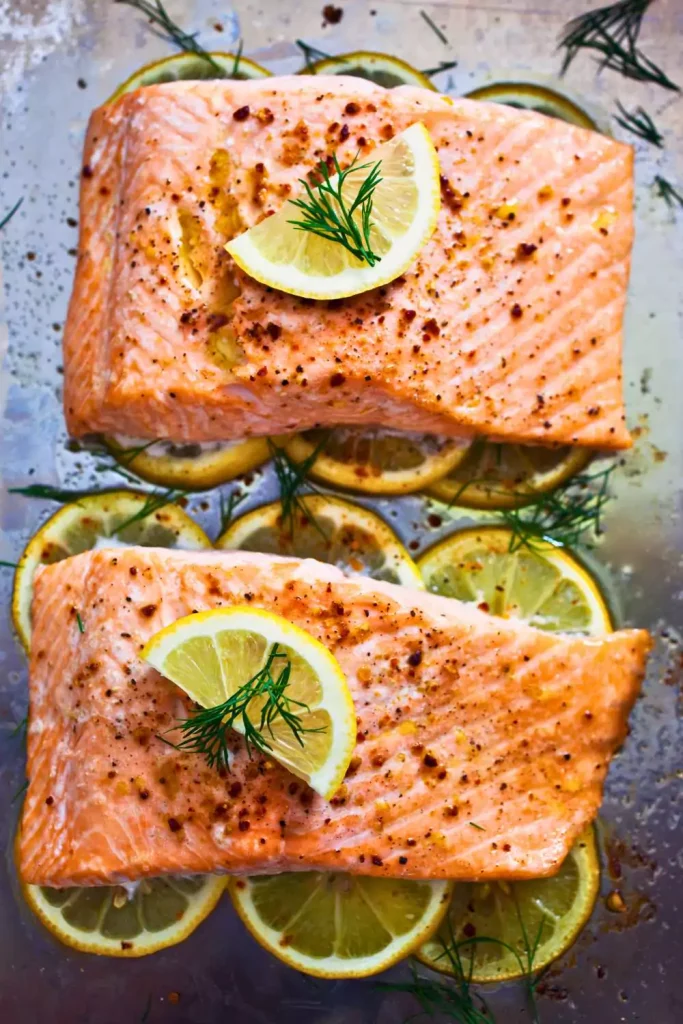Salmon is one of the most delicious, nutritious, and versatile proteins you can cook at home.
Whether you’re new to the kitchen or a seasoned chef, mastering how to cook salmon ensures perfectly tender, flavorful results every time.
In this guide, you’ll get a full breakdown—from choosing the right ingredients to expert-level cooking techniques that prevent overcooking.
How to Cook Salmon
Salmon is a fatty fish rich in omega-3s and protein, making it a healthy centerpiece for any meal.
Its naturally rich flavor means it doesn’t need heavy seasoning, and it can be cooked in various ways—baked, pan-seared, grilled, or poached—depending on your preference.
This recipe focuses on the baked lemon-garlic salmon method, which is easy, mess-free, and crowd-pleasing.

Ingredients
- 4 salmon fillets (about 6 oz each, skin-on or skinless)
- 2 tablespoons olive oil
- 2 garlic cloves, minced
- 1 lemon (zest + juice)
- 1 teaspoon dried Italian herbs (or a mix of thyme, oregano, parsley)
- Salt and freshly ground black pepper, to taste
- Optional: lemon slices and chopped fresh parsley for garnish
Step-by-Step Process
Step 1: Preheat the oven: Set your oven to 400°F (200°C) and line a baking sheet with parchment paper or foil.
Step 2: Prepare the salmon: Pat each fillet dry with a paper towel. Dry salmon sears better and roasts evenly. Place them skin-side down on the prepared baking sheet.
Step 3: Season the fillets: In a small bowl, mix olive oil, garlic, lemon zest, lemon juice, and herbs. Brush or spoon the mixture generously over each salmon fillet. Sprinkle with salt and pepper. Top with thin lemon slices if desired.
Step 4: Bake: Place the baking sheet on the middle rack and bake for 12–15 minutes, depending on the thickness of the fillets. The internal temperature should reach 125°F (52°C) for medium doneness.
Step 5: Rest and garnish: Remove from oven and let rest for 3–5 minutes. Garnish with chopped parsley and a fresh squeeze of lemon juice before serving.
Key Tips to Avoid Overcooking
- Use a thermometer: The sweet spot is 120–125°F (wild salmon) or 125–130°F (farmed salmon).
- Don’t rely on time alone: Thicker cuts need more time, while thin cuts can overcook fast.
- Rest the salmon: Allow a few minutes after cooking for juices to redistribute and internal heat to finish the job.
- Check flakiness: Salmon is done when it flakes easily with a fork but still looks slightly pink in the center.
- Skin-side down: When baking or searing, always cook skin-side down to protect the flesh and enhance crispness.
Conclusion
Cooking salmon doesn’t have to be intimidating. With the right technique and attention to temperature, you can serve up perfectly cooked, juicy salmon every time—whether it’s a weeknight dinner or a special gathering.
Stick to fresh ingredients, don’t overthink the seasoning, and trust the process. Bookmark or pin this guide—you’ll be coming back to it again and again.